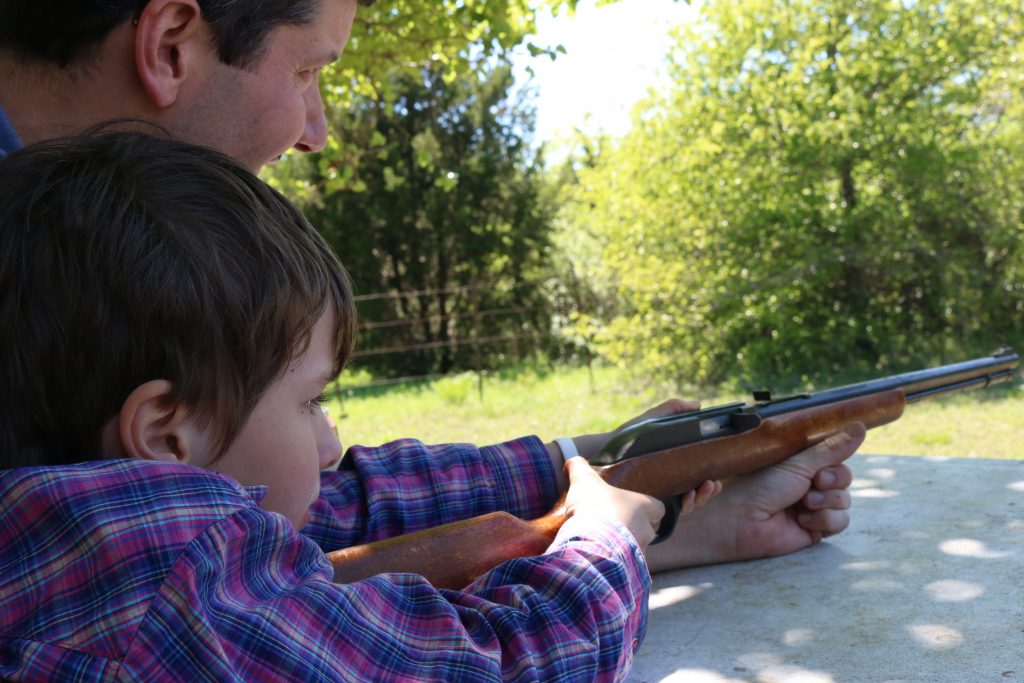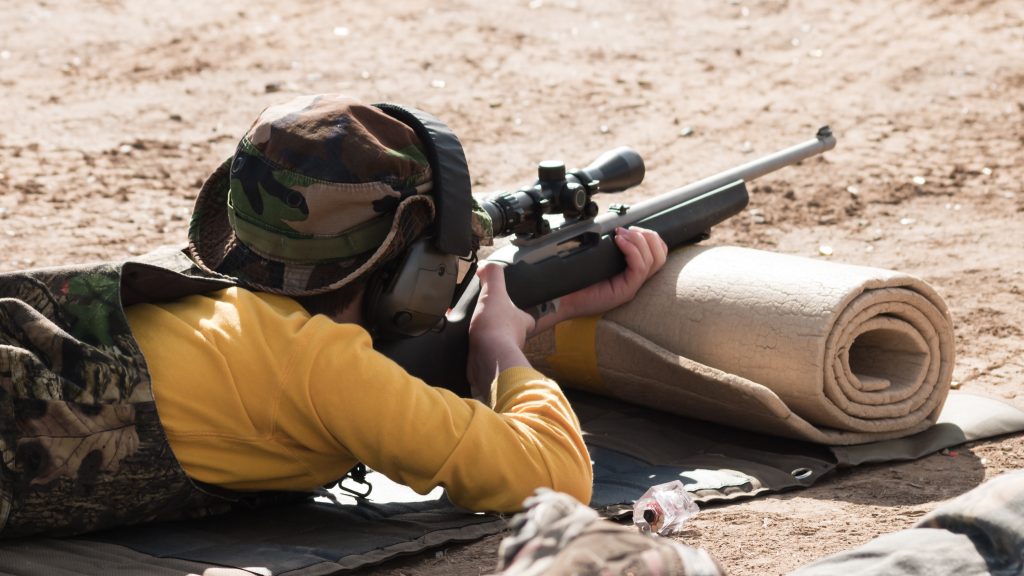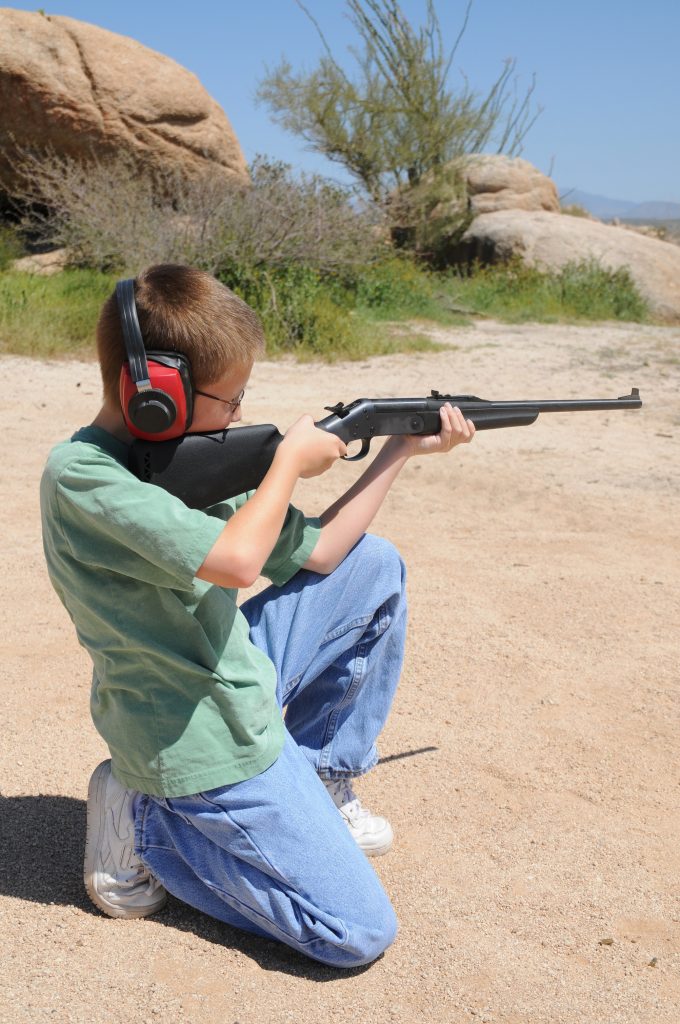Choosing a Youth Rifle
I am often asked the question of the best rifle for a youth shooter. Like many questions, the answer is complicated. It almost entirely depends on the shooter. The short answer is, “one that fits and they are not afraid to pull the trigger on.”
There’s a lot more to consider, though.

Father teaching son rifle basics
The middle of summer has come and gone, and fall is right around the corner. Many youths are taking their first hunter safety course or experiencing their first time shooting and may show interest in the traditional outdoor sport of hunting. The good news is that summer is a great time to not only get your child their first hunting rifle, but to have the time to go out and shoot it, as the distractions and responsibilities of going to school every day are not an issue in June, July, and most of August.
Follow The “4 F’s”
When choosing a youth rifle, and especially a first youth rifle, you need to consider the 4Fs- fit, feel, function and fire.
Fit
The most important part of choosing a youth rifle is how the rifle FITS the child. Shooting a big game rifle that is too long or too large will not only affect the accuracy when shooting, but can have a dramatic effect on things like the ability to shoot under pressure, recoil, and, another important factor, the ability of the youth to carry the rifle by themselves along on a hunt.
Fortunately, there are many manufacturers today that make designated youth rifles that are scaled-down versions of their adult counterparts. These rifles generally have a shorter length of pull and often include a significantly cushioned recoil pad to eliminate excessive recoil. Many gun manufacturers have become wise to the fact that parents don’t want to spend money every year or so purchasing another rifle for their child, and include either a full-size stock or bolt-on spacers that allow the length of pull to be changed as your child grows. Also important to remember is that if you are buying a rifle in the summer, there will be a lot more clothing between the butt end of the rifle and your child’s shoulder come fall or winter.
Feel
The FEEL of the rifle is also very important. Your child should be able to carry the rifle comfortably, mount it easily, and be able to put the bullet where he or she is aiming with a great degree of certainty. Their finger should be able to reach the trigger for a proper and consistent trigger pull, and the balance of the gun should be such that they should have no trouble holding it up on their own in an offhand position. In an ideal world, every shot would be taken sitting down off of a bench for steady rest. Unfortunately, the hunting world is most often not ideal. By shortening the length of the barrel, the shorter stock at the opposite end creates a better-balanced weapon.

Young boy shooting a youth rifle prone
Function
The FUNCTION of a rifle is also important. For big game rifles, I am a big fan of a bolt action rifle as a first hunting rifle for several reasons. First, the action needs to be manually cycled by lifting the bolt, pulling it back to eject the spent cartridge, and then pushing it forward and back down into a locked position between each shot, leading to an extra margin of safety when it comes time to shoot. This eliminates entirely the chance of an accidental second trigger pull due to recoil, motion, or even handling while following up after the shot. Bolt actions can also be carried in a locked, but uncocked position, which will allow a cartridge to be carried in the chamber with no possibility of an accidental discharge while walking or moving in and out of a blind or stand. Yes, you could load just a single bullet in a semi-automatic, but that will cause an even more delayed follow-up shot should there need to be one.
Fire
Perhaps the MOST important thing to do when choosing a youth rifle is to FIRE the rifle because you can never tell what the child’s reaction will be until they actually have the reaction. You may think little Johnny would be fine with a .270, but he might be a LOT better with a .243.
Some tips that will help you accomplish this are:
- Put a message out on social media groups stating you’re looking for someone that has XYZ firearms for your child to try, and you’d be happy to pay for range time and give them a box of ammo in order to facilitate it.
- Some local gun shops have “demo” guns available, either in their store or through their company representatives. Ask them if you can set up or if there will be any “demo days” in the near future.
- Put notes up at the range letting people know what you are trying to do. Offer the same thing as on social media.

Young boy in the desert shooting a youth rifle crouched
Bonus: Caliber
I am a big fan of smaller caliber, low-recoiling rifles when it comes to youth. There is nothing worse than causing a child to become “gun shy” and have their accuracy suffer, as well as making them less inclined to want to shoot the gun in the first place because they were afraid of a big kick from their gun.
When it comes to recoil sensitivity balanced against downrange energy, there are two paths that you can take. The fact is that most kids can’t handle the recoil from a .30-06 or .308 with standard loads, so your first option is to purchase or load reduced-recoil loads for a larger caliber. The downside to this is that reduced recoil loads weren’t all that common before the shortages, not to mention the lack of powder, brass, and primers for reloading, so you may be in quite the pickle when it comes time to shoot having only full power loads to practice and hunt with.
The second option is to use a smaller, but still adequate caliber that will allow a range of ammunition to be fired through it and have high availability. As far as big game is concerned, my number one choice for youth starting out is a .243 Winchester. The .243 combines several desirable factors- a bullet large enough to kill most ungulates and every varmint in the US, yet small enough and shot at a high enough velocity that trajectory does not require much guesswork out to 300 to 400 yards. The average recoil with a 90-100 grain bullet is at the very low end of the spectrum at only 9 pounds.
Over the past several years, I have become enamored with another highly effective caliber and the relatively new kid on the block, the 6.5 Creedmoor. Designed for long-range shooting, its short case and small-diameter bullets in the 140-grain range (139-143) combine to produce only 12 pounds of recoil force. This is certainly not that much, but 33% greater than the .243, albeit with 40% greater bullet weight.
Remember- shooting and hunting are supposed to be FUN, not stressful or painful. Following the above tips will help you make sure that it is for your child.